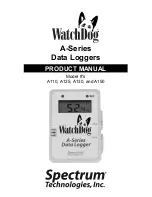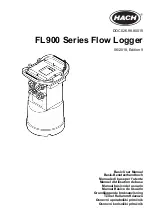
58
Chapter 2 Working with DaqLab
DaqLab employs three different calibration methods:
Two-point calibration
,
Offset calibration
and
Zero calibration
. When selecting a sensor type to calibrate, DaqLab prompts you to the appropriate
calibration procedure:
Sensor
Type
Calibration Method
Current
0 - 24mA
Two-point calibration
Temperature
NTC 10K
Zero calibration
Temperature
NTC 100K
Zero calibration
Temperature
PT-100 2-wire
Two-point calibration
Temperature
PT-100 3-wire
Two-point calibration*
Temperature
Thermocouple J
Offset calibration
Temperature
Thermocouple K
Offset calibration
Temperature
Thermocouple T
Offset calibration
Voltage
0 - 10V
Two-point calibration
Voltage
0 - 50mV
Two-point calibration
Two-point Calibration
The two-point calibration sets the gain (slope) and offset (intercept) of the sensor's conversion function.
Use the two point calibration to calibrate the voltage and current sensors and the PT100 temperature
sensors.
* To calibrate the PT100 3 wire, first calibrate the PT100 2-wire as the slopes of their conversion
functions are identical. Then proceed to adjust the PT100 3-wire offset.
In some cases you may need to refine your calibration using the fine offset tuning tool.
Offset Calibration
To calibrate the thermocouple temperature sensors: TC-J, TC-K and TC-T, first calibrate the 50mV
sensor type. That will set the slope for all thermocouple temperature sensors. Then proceed to adjust
the offset using the Offset calibration technique.
Zero Calibration
The zero calibration sets only the offset (intercept) of the sensor's conversion function.
Use the zero calibration to calibrate the NTC 10k and NTC 100k temperature sensors.
5. Calibration
Password
To prevent accidental change of the calibration, the calibration procedure is protected by a password.
The default password is: 1234
www.esis.com.au
Ph 02 9481 7420
Fax 02 9481 7267
esis.enq@esis.com.au
















































